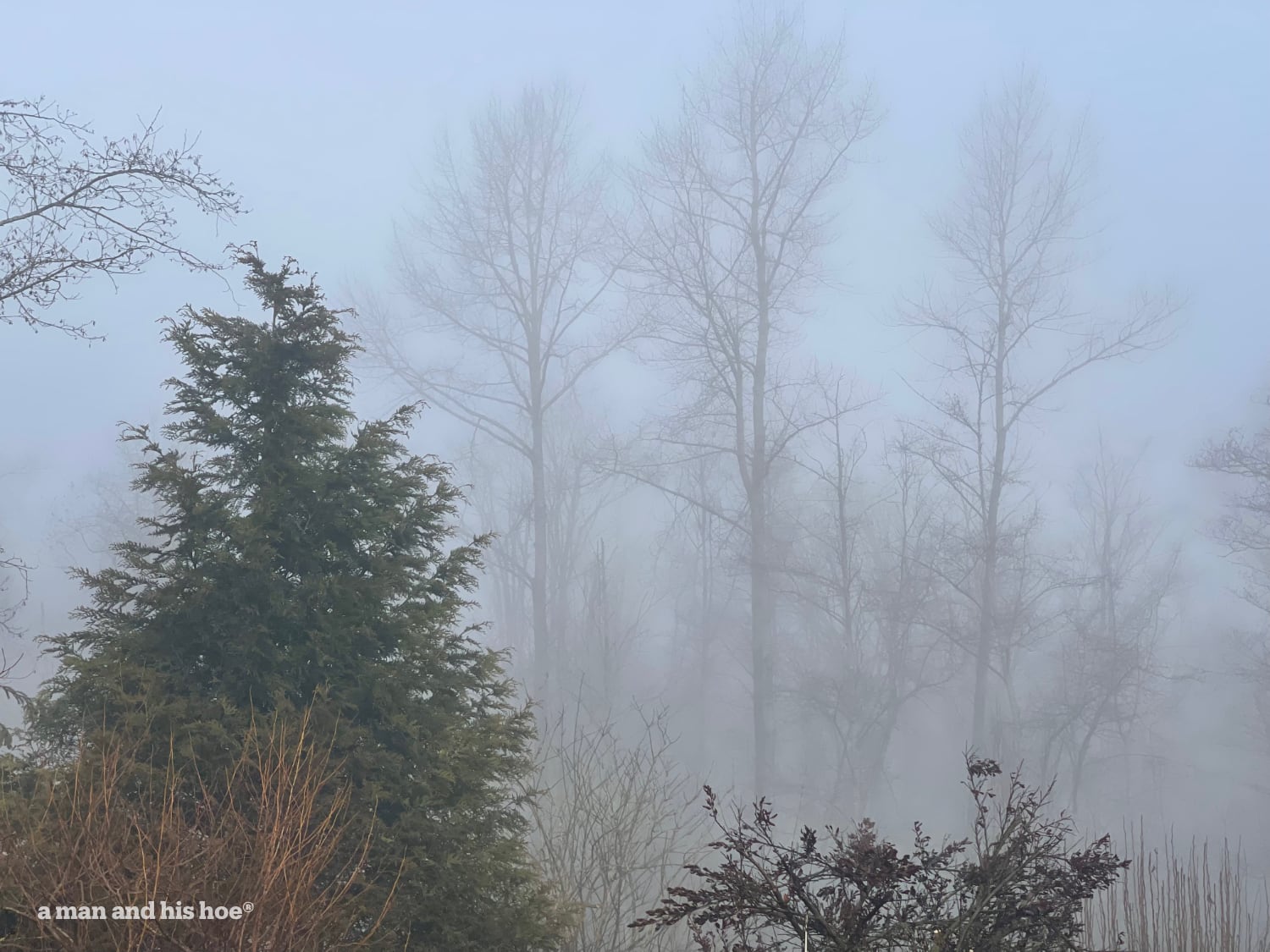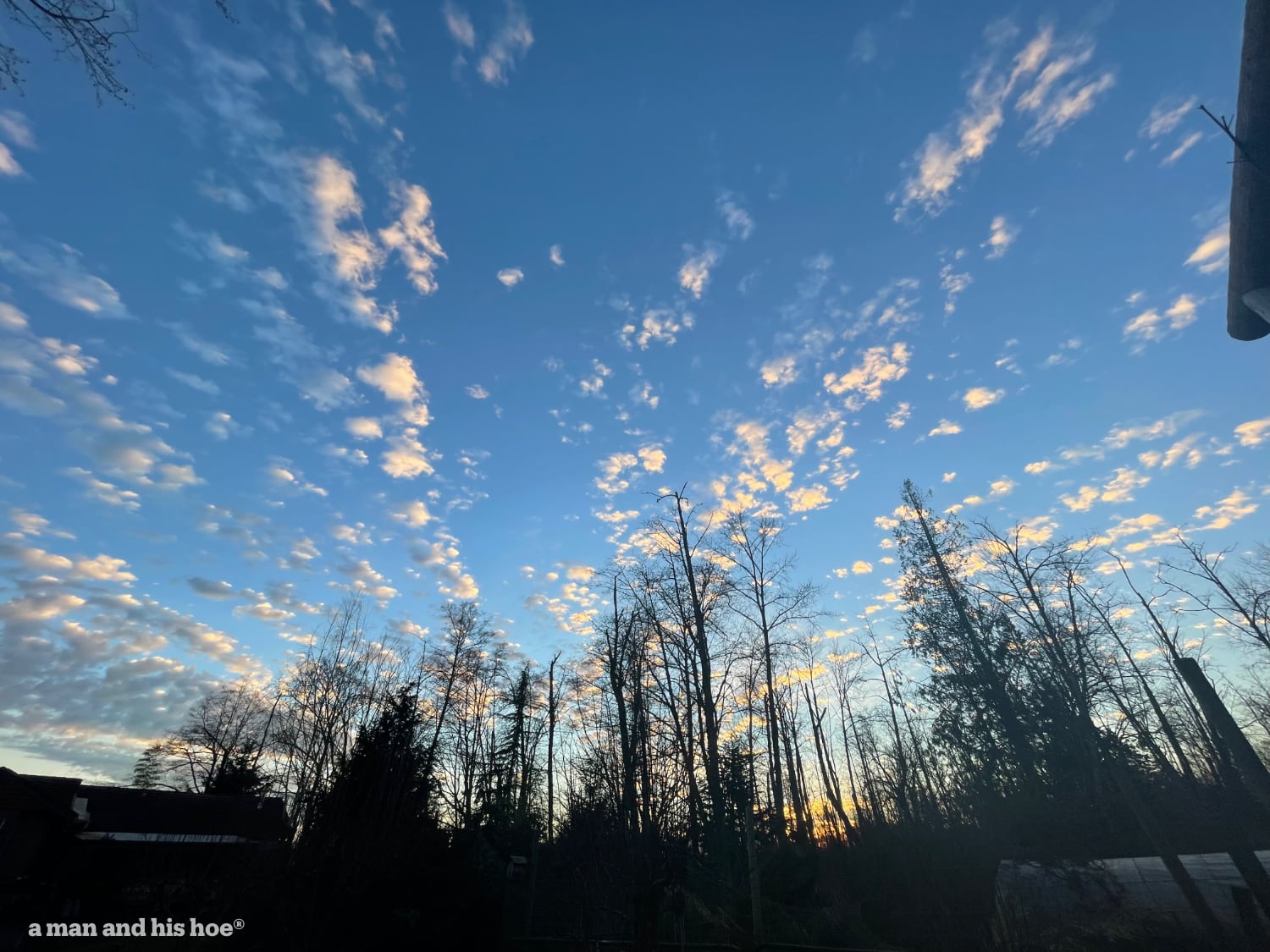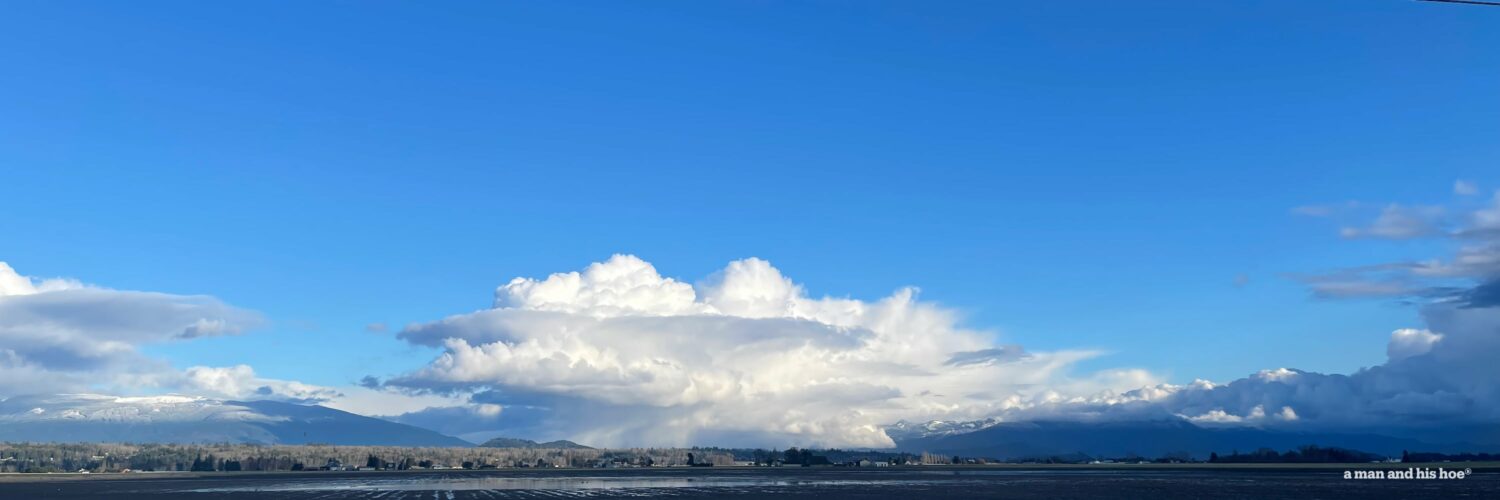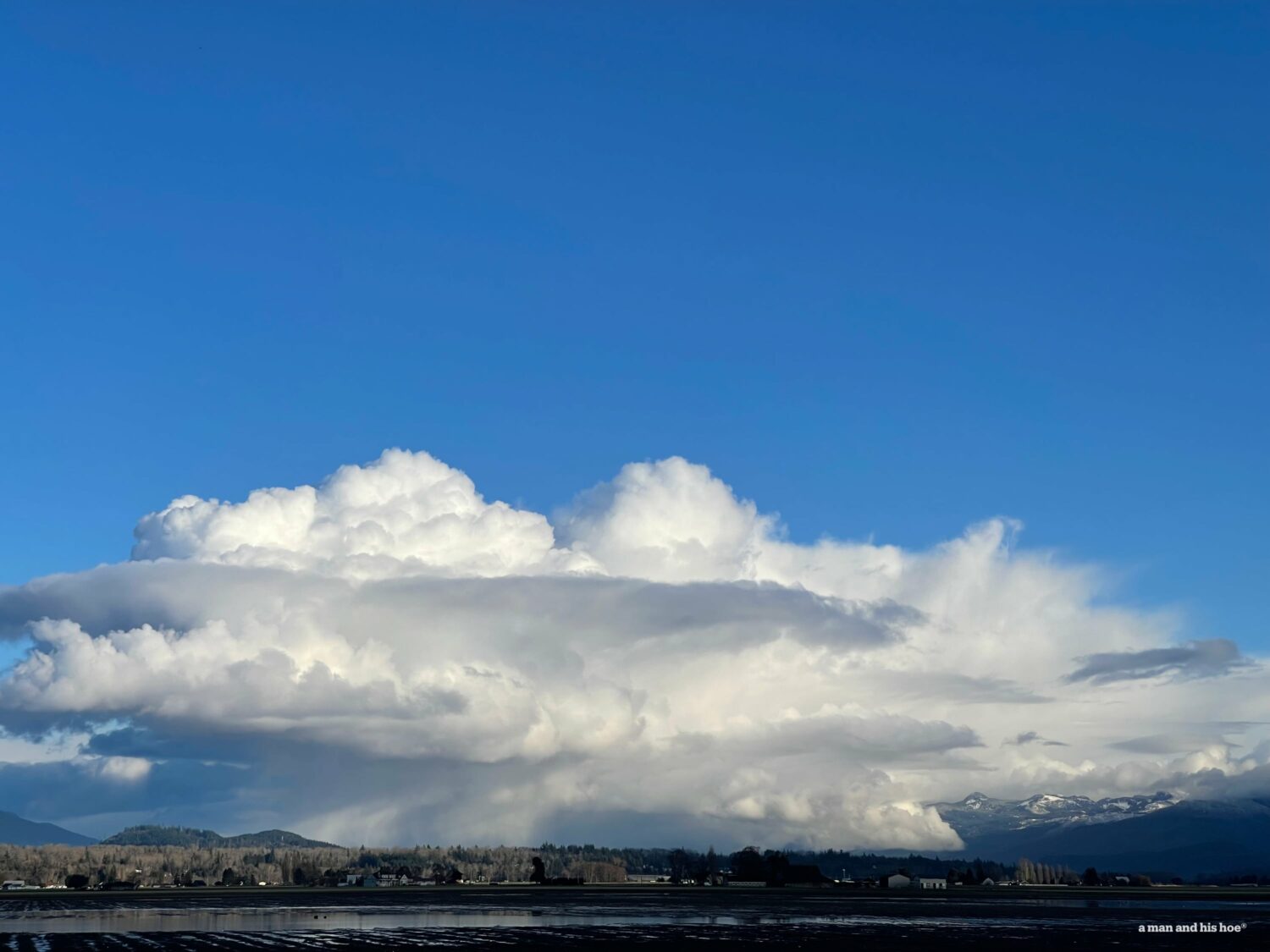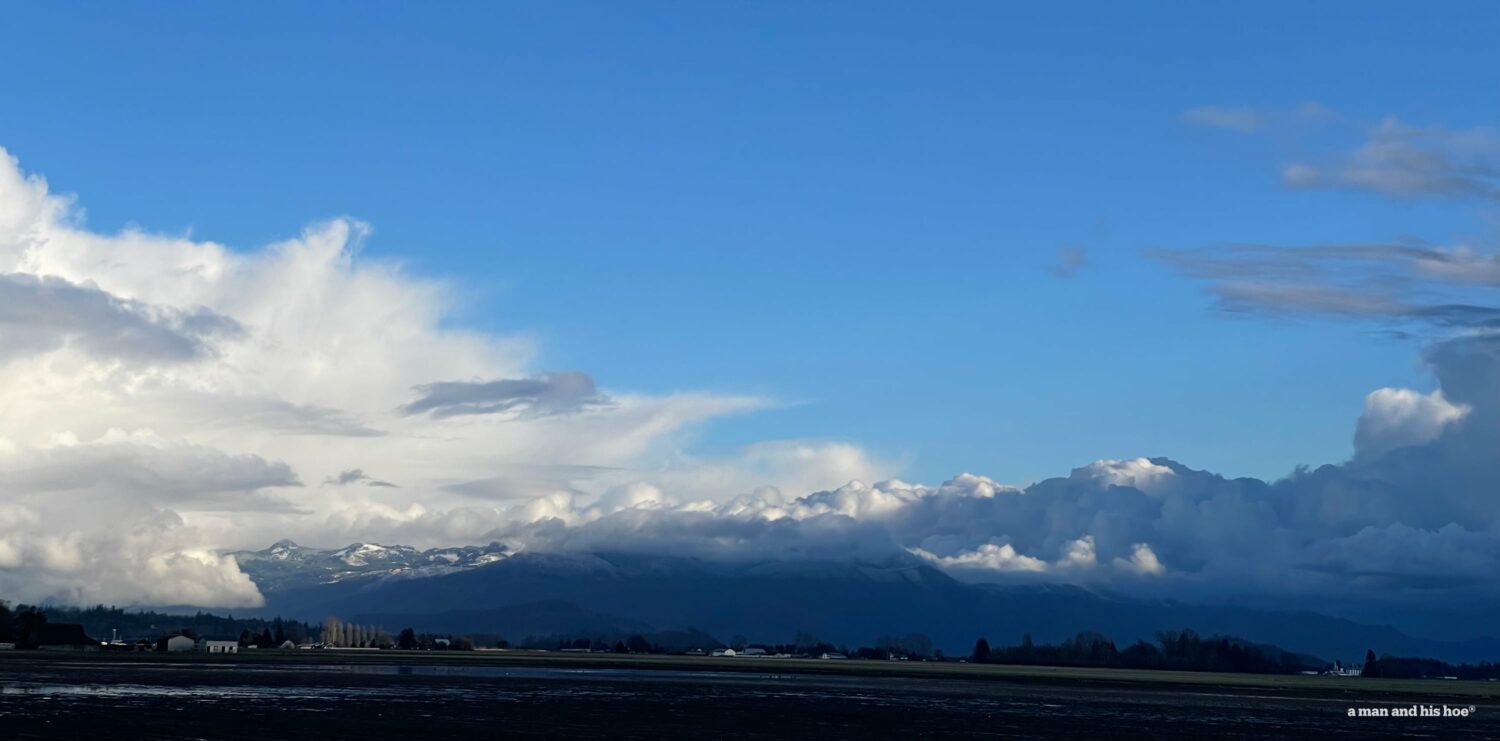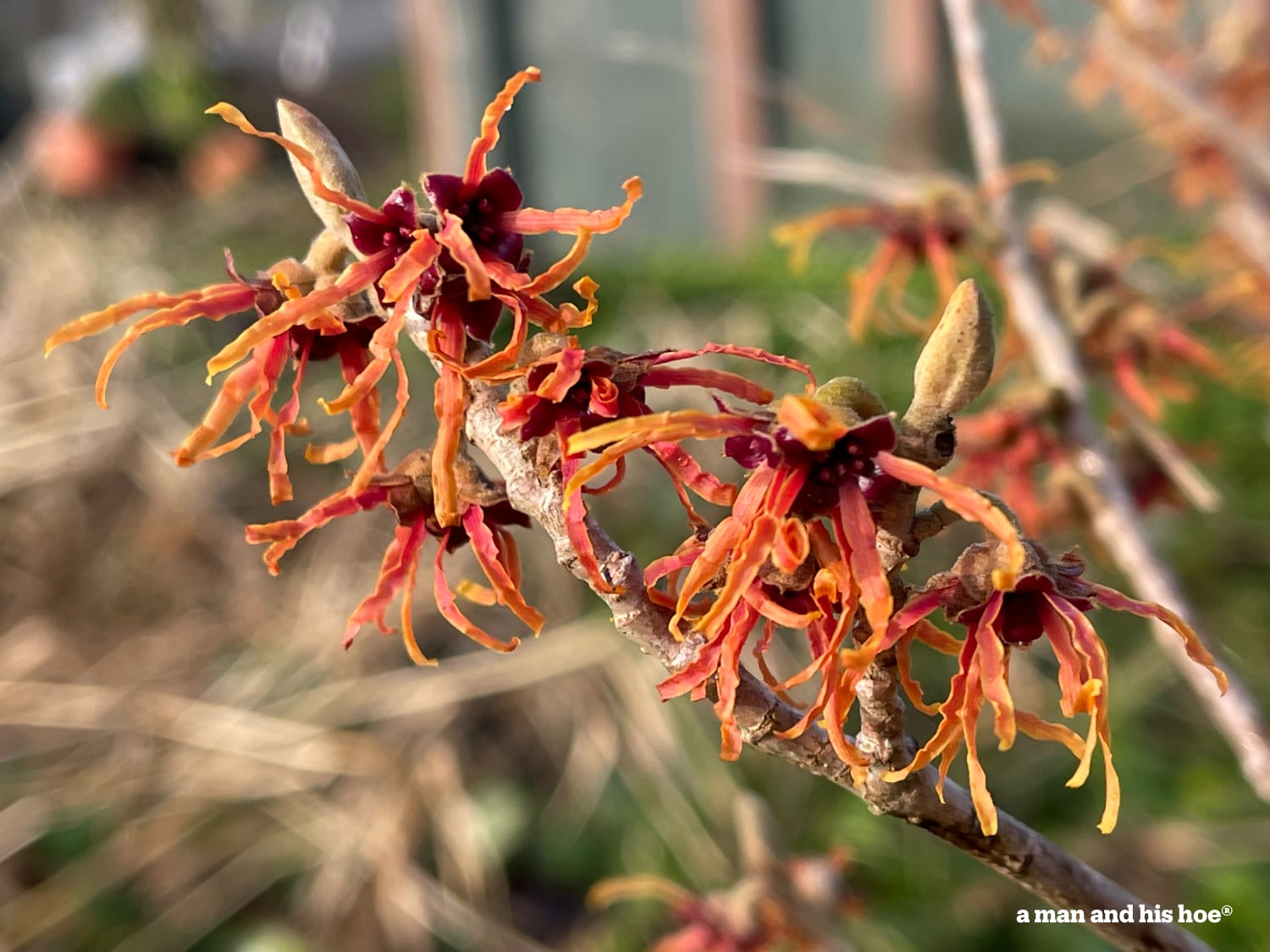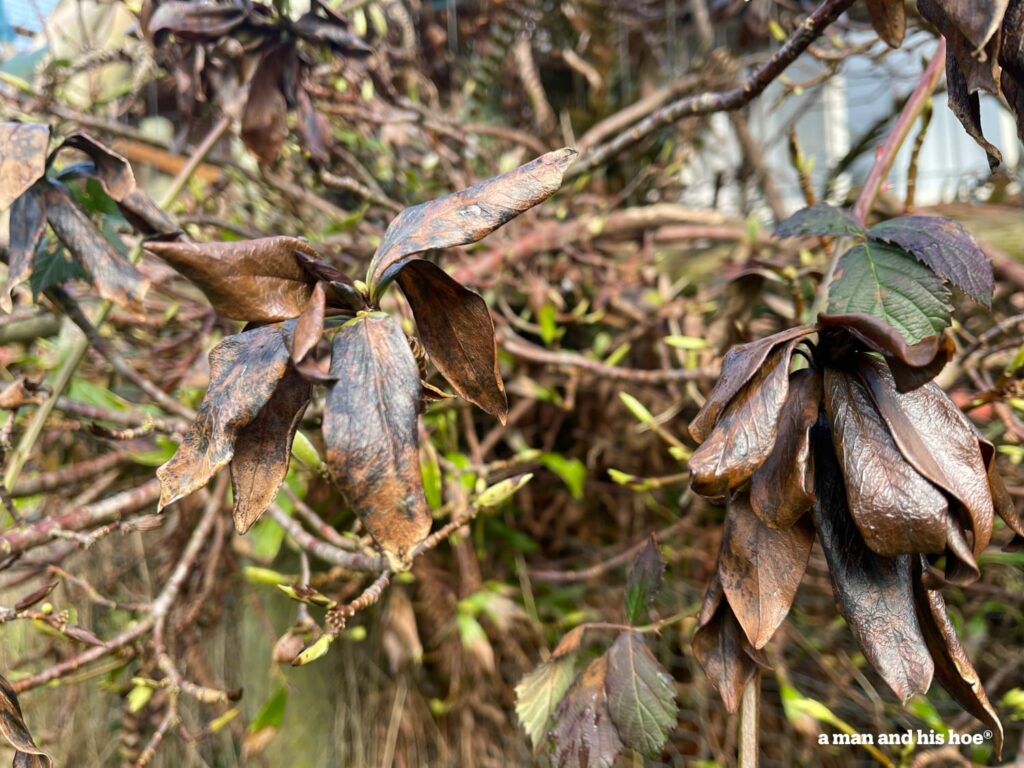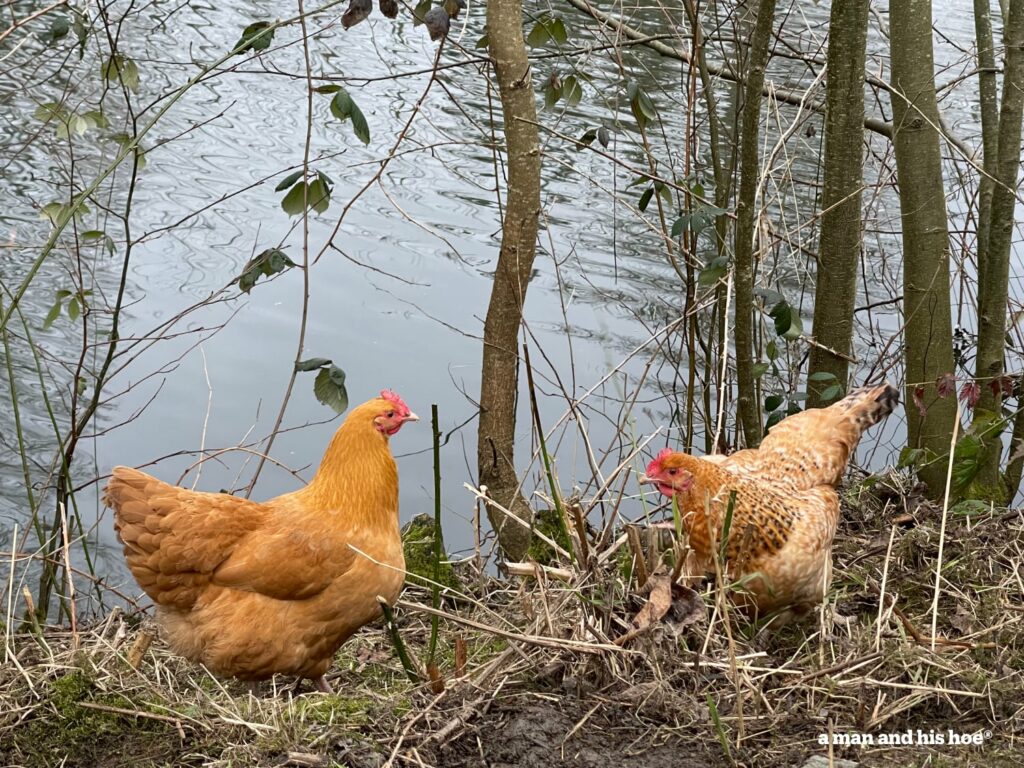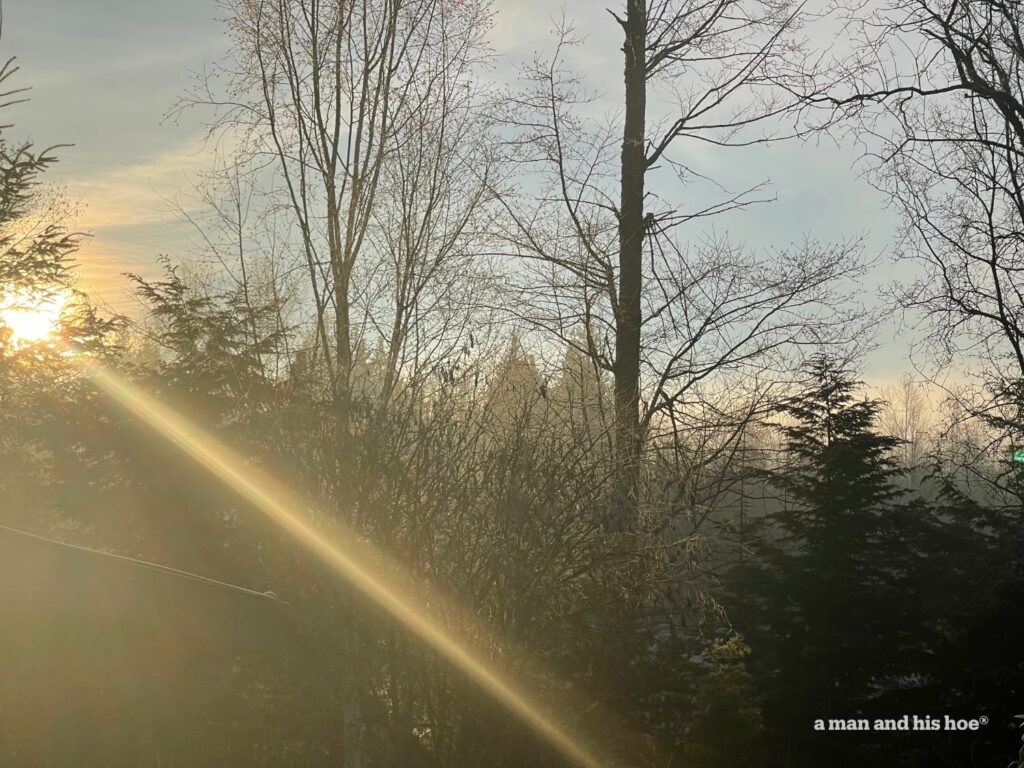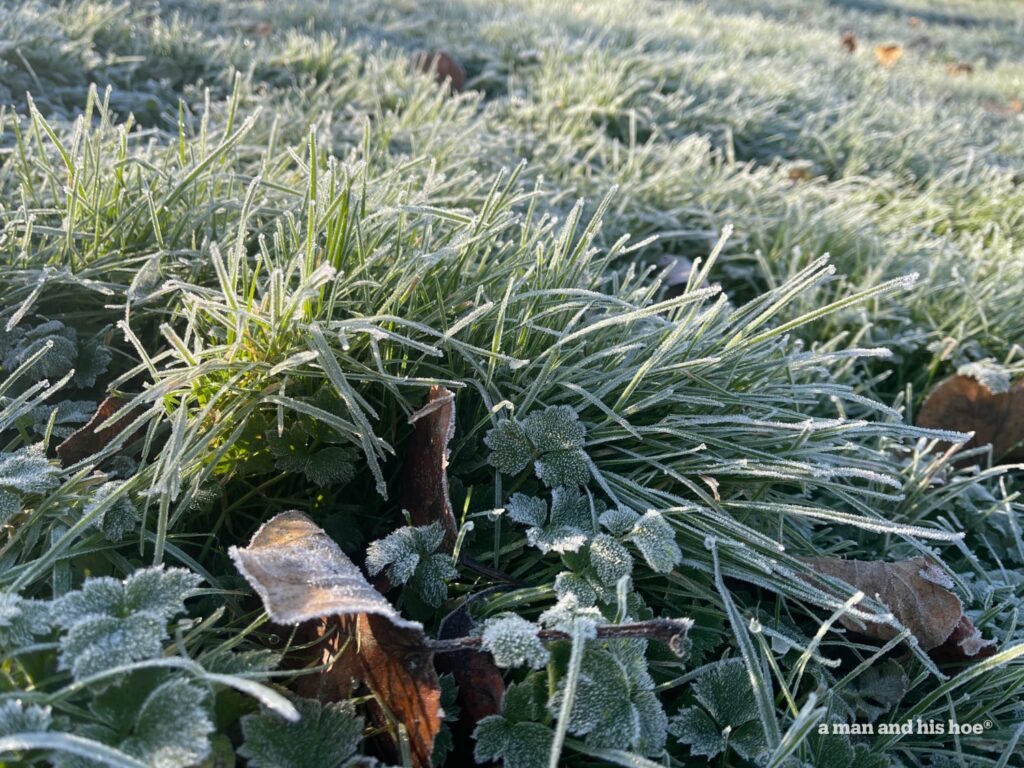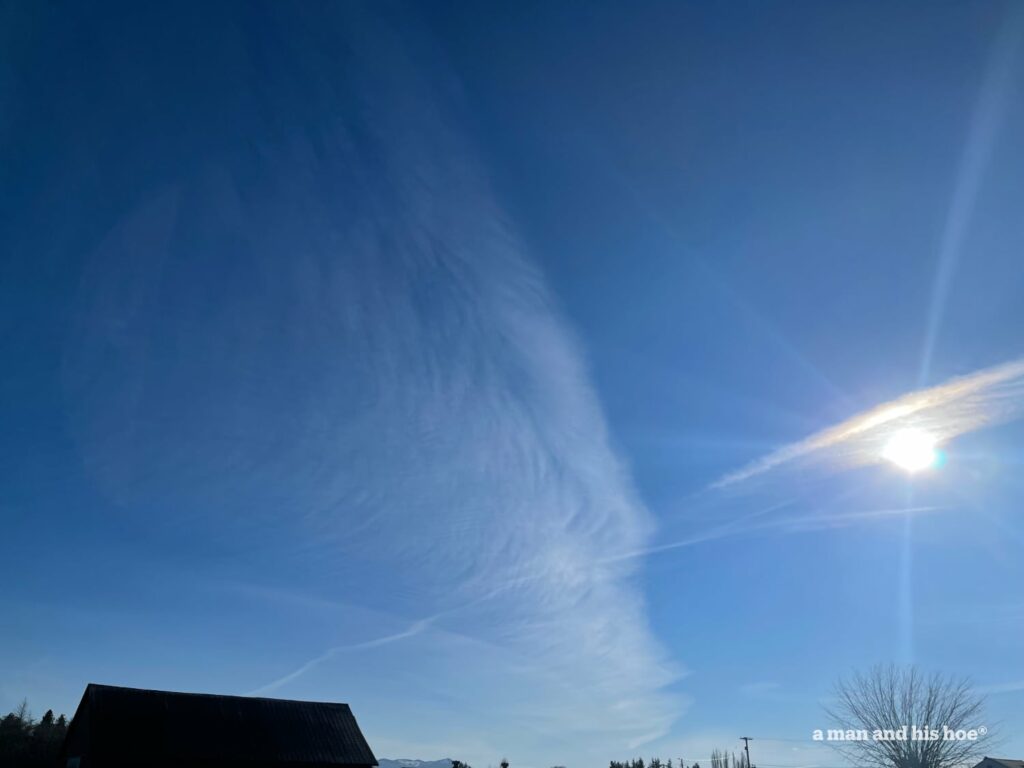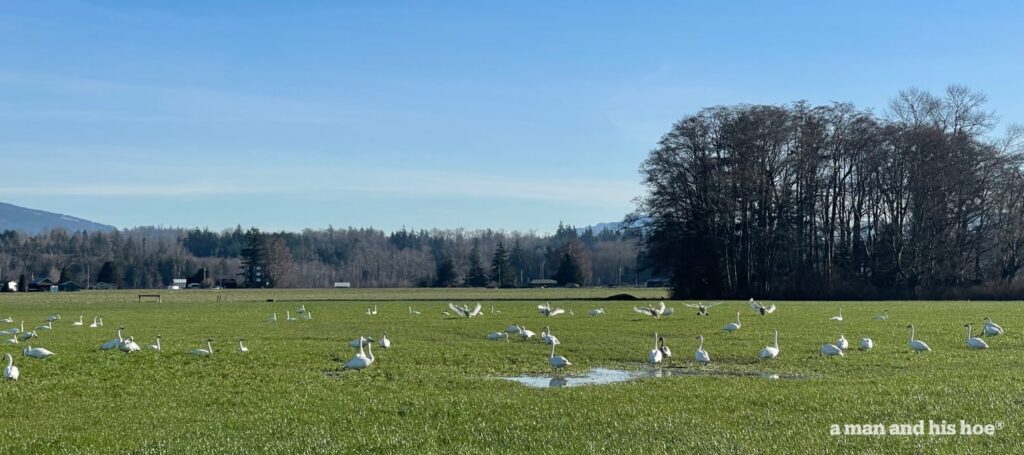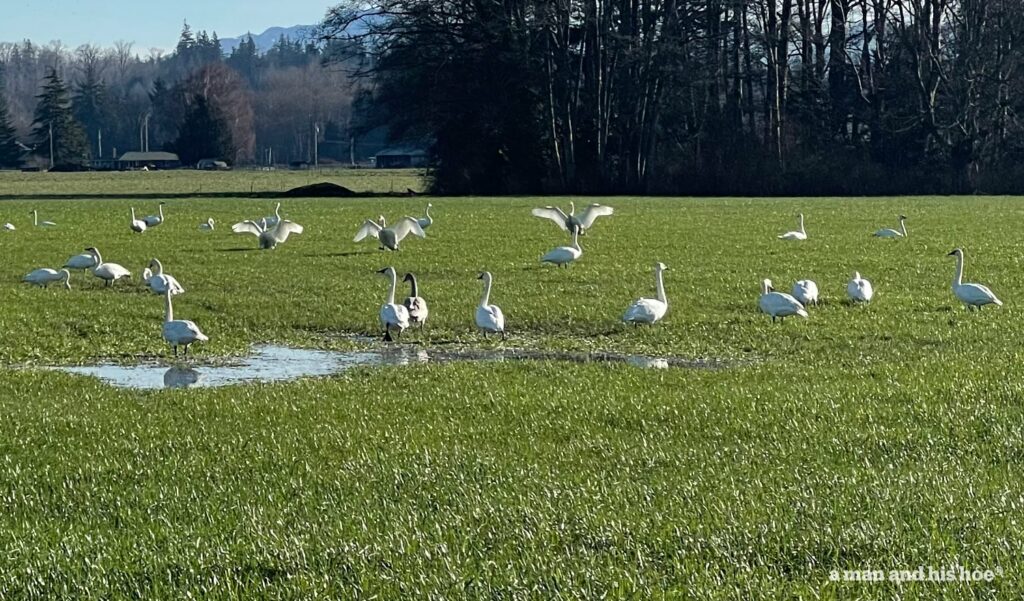
Flower away hazelnut! Some trees go all out when it comes to flowering. Hazelnuts are early bloomers. On this warm, sunny, spring day, they have outdone themselves. How many thousands of blossoms are on a single hazelnut tree? Tens of thousands? Over a hundred thousand?
And one lucky hover fly has the whole tree to itself.
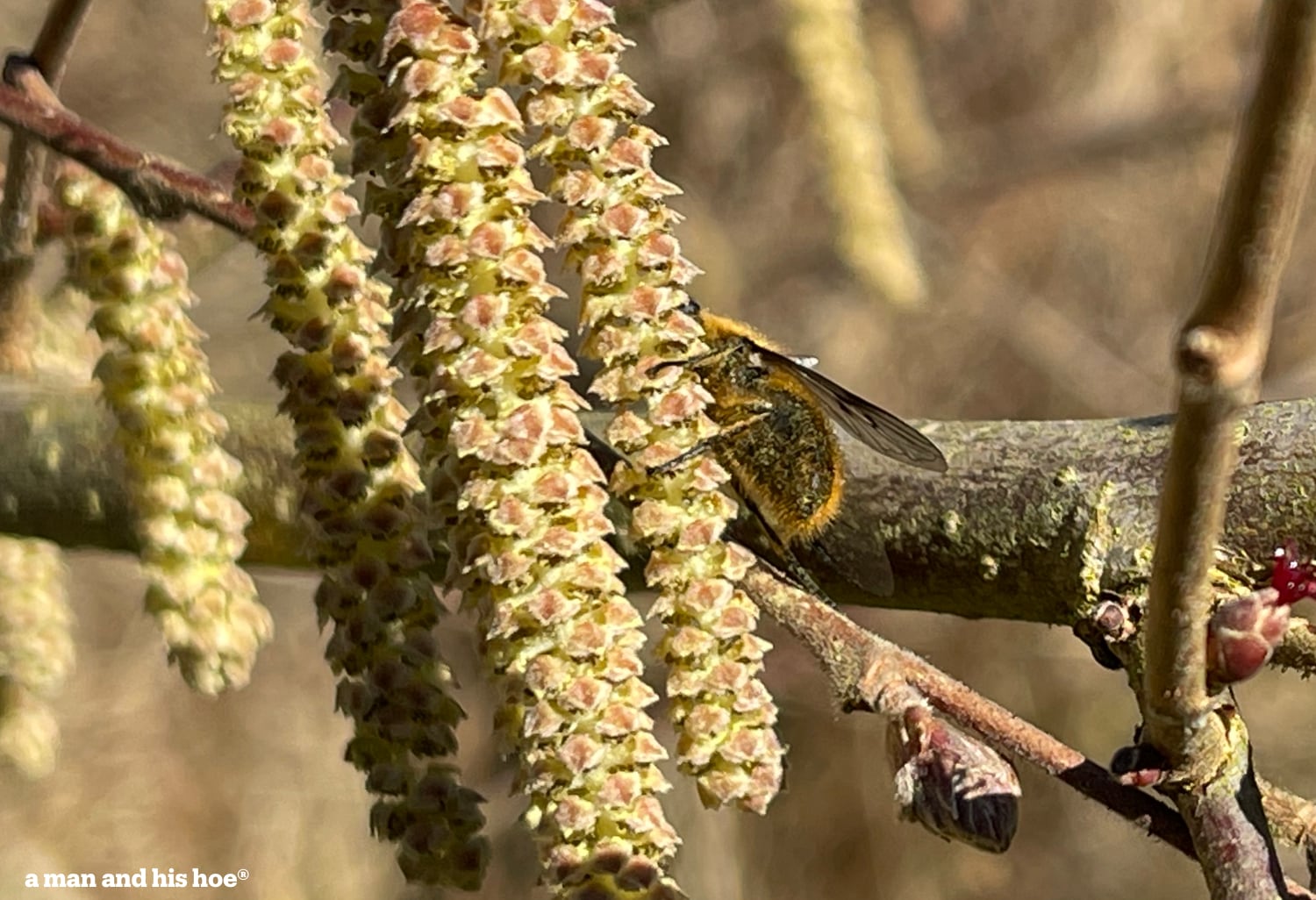
Is that a bee? In mid February? That was my first thought seeing a fuzzy bundle feasting on the hazelnut blossoms. But no, it turned out to be a hover fly instead. A tell tale sign is it only has a single pair of wings. No bee would be caught dead without a full set of two wings.
If you are an insect who loves flowers, it pays to get out early in the season so you can have a whole hazelnut tree to yourself.
Shake a hazelnut tree which is in bloom and a cloud of pollen dust fills the air. But sadly, if you get hay fever from hazelnut pollen, you may be allergic to hazelnuts. That would be a bummer.

Underneath the hazelnuts, an artichoke has sprouted. I’m thinking this may have sprouted from seed. When artichokes bud, I always let some bloom for the wonderful, purple flowers. There are substantial sprouts where artichokes grew last year. But this minuscule artichoke sprouted where no artichoke grew last year.
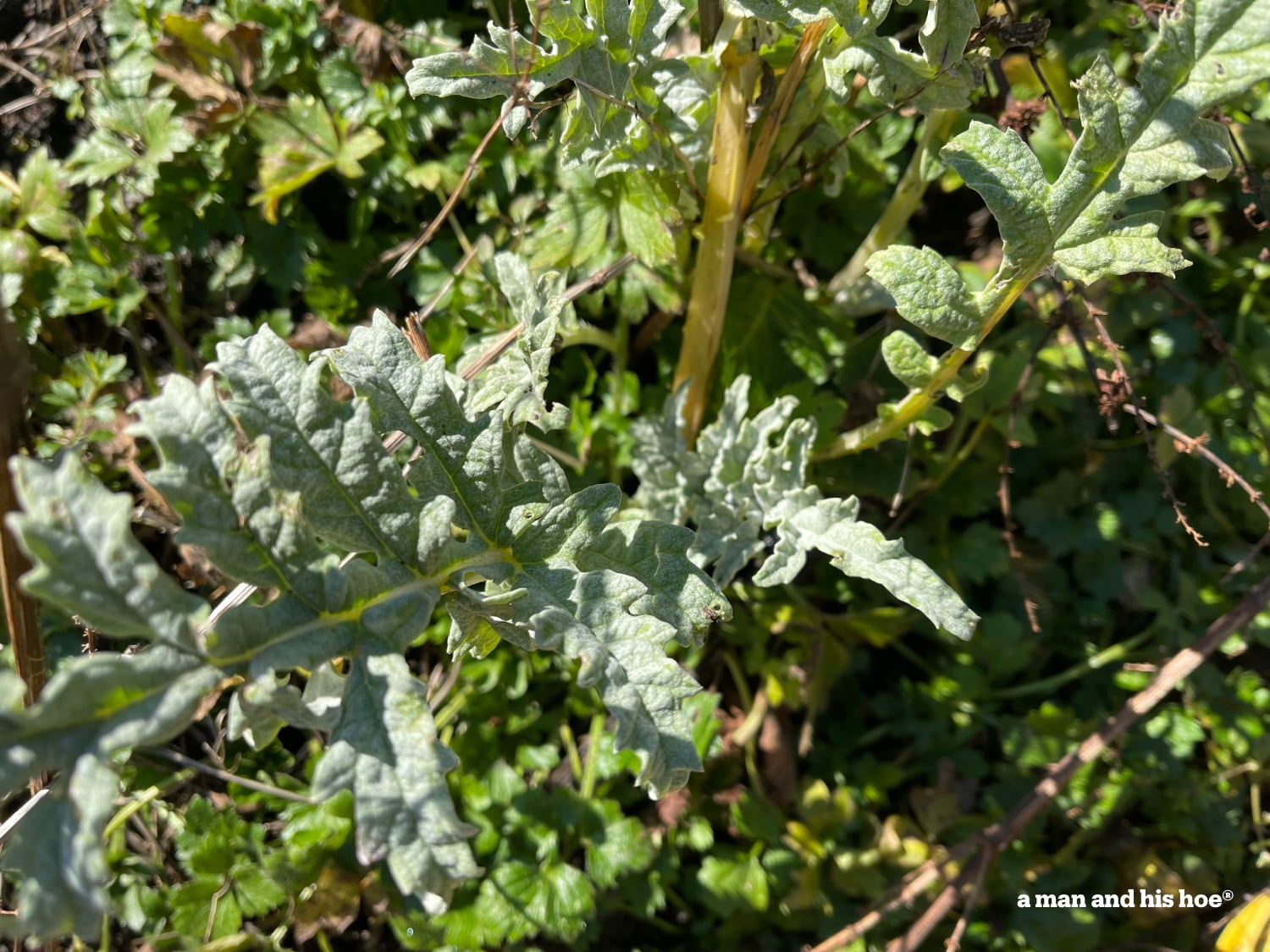
It’s only February, but already I’m dreaming of summer days with arms full of heavy artichokes plucked out of the garden.
